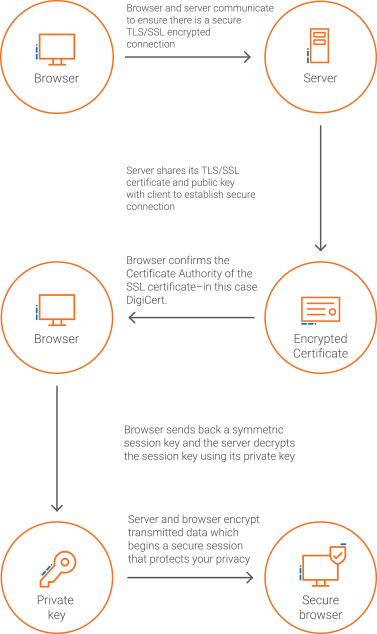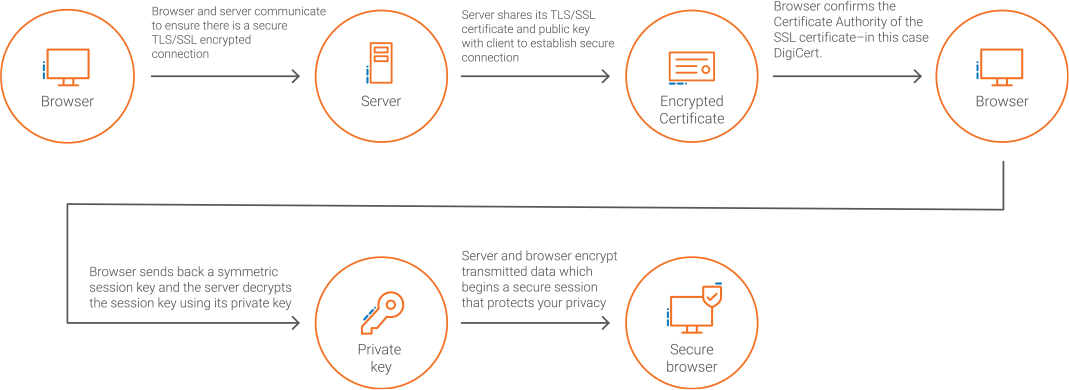
How Do TLS/SSL Certificates Work?
Encryption and domain verification together make a website secure, encrypted and safe to use
Securing Your Data in Transit–and Brand Identity
Transport Layer Security (TLS) certificates, also known as Secure Sockets Layer (SSL), are essential to protecting internet browser connections and transactions. They ensure that your website displays a secure message, and that the identity of the domain owner is verified.
TLS/SSL is the standard security technology that works behind the scenes to keep your online transactions and logins secure—here is how it works.

Creating a Secure Connection
Invisible to the end-user, a process called the “TLS/SSL handshake” creates a protected connection between your web server and web browser nearly instantaneously every time you visit a website. Websites secured by a TLS/SSL certificate will display HTTPS and the small padlock icon in the browser address bar. TLS/SSL certificates are used to protect both the end users’ information while it’s in transfer, and to authenticate the website’s organization identity to ensure users are interacting with legitimate website owners.

